While the market is flooded with various expensive robot cleaners, the Roborock Q7 Max vs Xiaomi S10T provide a breath of fresh air for budget-conscious individuals. Of course, the cheaper price tag always comes with trade-offs, and they don’t have self-cleaning bases. Luckily, this minor setback doesn’t prevent them from delivering nearly all the intelligent features you would expect from a state-of-the-art robovac.
The Roborock Q7 Max is the better choice for several good reasons, and the standout among them is better vacuum and mop performance. Adding to its appeal is the cheaper price tag compared to the Xiaomi S10T, but not much.
Roborock Q7 Max vs Xiaomi S10T: Comparison Chart


Roborock Q7 Max vs Xiaomi S10T: Differences
The Roborock Q7 Max wins the Xiaomi S10T with a score of 5-2. Let’s take a closer look at the strengths and weaknesses of each, as well as all the differences between them.
Cleaning Performance
Winner: Roborock Q7 Max
Suction Power
| Roborock Q7 Max | Xiaomi S10T | |
|---|---|---|
| Max Suction (Pa) | 4200 | 4000 |
| Max Airflow (CFM) | ≈ 15.8 | ≈ 14.2 |
Both the Q7 Max and S10T have above-average airflow, resulting in high scores on all types of floors. Here are the comprehensive results detailed below.
Hard Floor
| Roborock Q7 Max | Xiaomi S10T |
|---|---|
| ≈ 97% | ≈ 95% |
The Q7 Max was better on my hard floor, as you can see. The variance between them is minimal and shouldn’t be a deciding factor, but it illuminates the significant advantage that comes with the robot’s higher suction power.
Carpet
| Roborock Q7 Max | Xiaomi S10T | |
|---|---|---|
| Low-pile Carpet | ≈ 94% | ≈ 92% |
| High-pile Carpet | ≈ 95% | ≈ 91% |
Once again, the Q7 Max had a slight edge on both low- and high-pile carpets since it has superior suction power. What’s more, this confirmed my hunch that the Q7 Max’s rubber roll played a crucial role in its enhanced efficiency during these experiments.
Hair
| Roborock Q7 Max | Xiaomi S10T | |
|---|---|---|
| 5-inch Strands | ≈ 87% | ≈ 68% |
| 10-inch Strands | ≈ 61% | ≈ 57% |
The Q7 Max was also better on both five- and ten-inch hair strands, so if you need something for cleaning hair, it is the better option. The good news is that untangling their rollers wasn’t daunting because the Q7 Max’s roller has an all-rubber design, whereas the one on the Xiaomi S10T features blades to cut through hair, making maintenance a piece of cake.
Design & Usability
Winner: Tie
First Look & Dimensions
| Roborock Q7 Max | Xiaomi S10T | |
|---|---|---|
| Dimensions (W x H) | 13.8 x 4.17 inches | 13.6 x 4 inches |
| Weight | 9.59 lbs | 8.6 lbs |
The design of the Q7 Max and Xiaomi S10T is typical for robot vacuums: both have a rounded shape with a LIDAR dome on top that can position precisely and measure distance accurately, making them a bit tall. Positioned alongside the laser-based tower are a set of two physical buttons, allowing you to easily operate the vacuum even when your smartphone isn’t within arm’s reach.
The overall setup is remarkably effortless, involving assembling a few parts together, connecting the robot to its charger, and then switching on the robot. For optimal control and comprehensive management of their functions. Both also come with a compact charging base that can be conveniently placed in any spot you desire.
Extractor & Side Brush
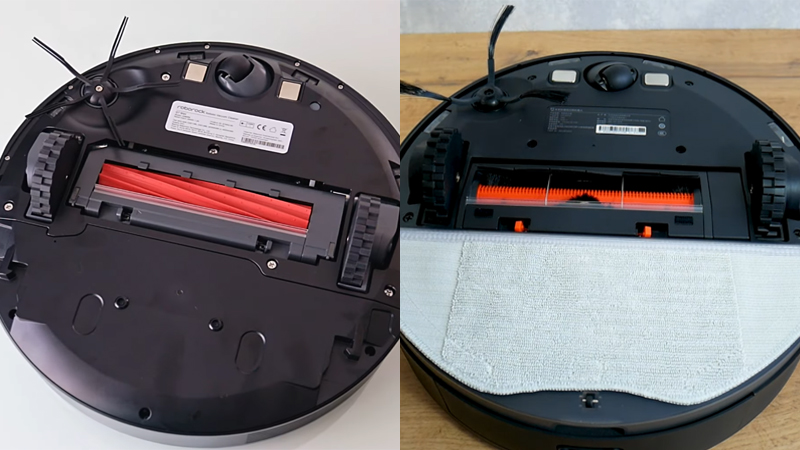
Turning these robots belly-up, you’ll see one of the most obvious differences between them: the Q7 Max uses an all-rubber main roller compared to a V-shaped bristled one on the Xiaomi S10T. The Q7 Max’s roller has the advantage of durability and easy maintenance, while the S10T’s roller is also adept at resisting tangles thanks to some built-in blades.
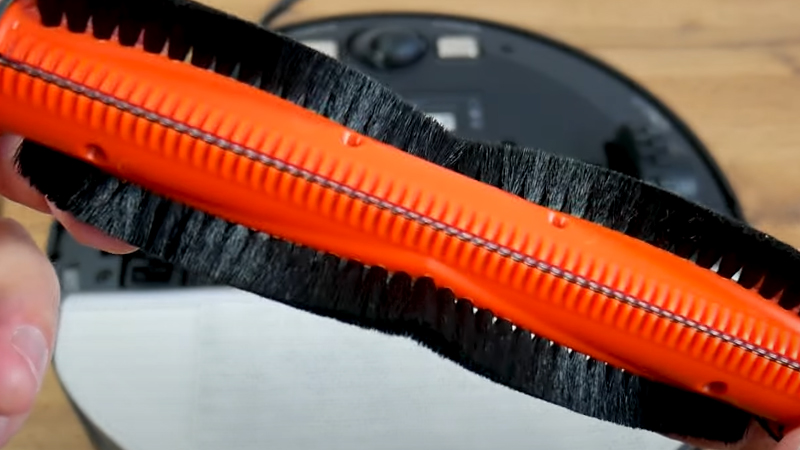
Another difference is the corner brush. The Q7 Max uses a 5-prong all-rubber design, while the S10T has a 3-prong bristled brush. I didn’t think this difference could affect cleaning performance, but it’s clear that the Q7 Max’s version boasts superior durability.
Navigation
Both the Q7 Max and Xiaomi S10T use a LiDAR sensor on top to 360-degree scan around and create multiple virtual maps accurately and quickly. Another strength of these laser-based robots is that they can even work in low-light zones, which vSLAM robovacs can’t.
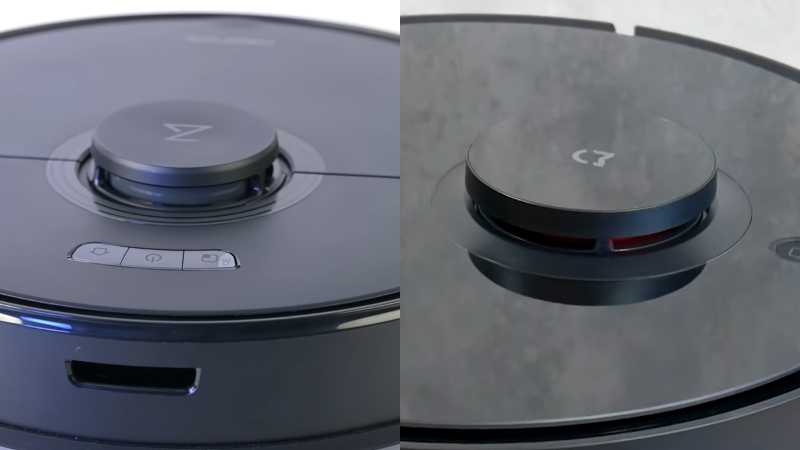
Once a detailed map of your living space has been created, they will intelligently maneuver through each room, starting with cleaning the edges and then moving toward the middle area with minimal risk of becoming trapped or wedged. You can also set some no-go zones and spot-cleaning areas on the corresponding app for more targeted cleaning.
One minor hiccup I encountered with them is that their LiDAR turrets can sometimes prevent them from fitting under low-clearance furniture. I observed the robots bump their turrets against the underside of some furniture pieces a few times until they accepted that they couldn’t go further and got out of there on their own. That was no big deal, but it did make me curious about the sturdiness of these domes and whether repeated collisions with furniture over time might lead to any operational glitches.
Speaking of obstacle avoidance, both have no front-facing camera or something like that for real-time obstacle detection and avoidance. So, they tended to hit obstacles and walls somewhat frequently during subsequent runs after creating maps. Both feature built-in bumpers, which is great since they help avoid any damage that could otherwise compromise their longevity.
These bots generally work well for many households. But for whatever reason, you want your robot to avoid obstacles without colliding – maybe you have not-yet-potty-trained furry friends or your kids don’t clean up their Lego blocks regularly – consider the Roomba J7+ or the Roborock S7 MaxV. Both are my best experts at dodging obstacles and pet messes.
Battery Life
| Roborock Q7 Max | Xiaomi S10T | |
|---|---|---|
| Battery Life | ≈ 91-183 mins | ≈ 98-202 mins |
| Charging Time | ≈ 198 mins | ≈ 181 mins |
The battery capacity on both is 5,200 mAh, lending them a commendable working life of up to approximately three hours between charges (at the lowest power setting). The “Recharge & Resume” feature, which enables them to autonomously return to their charging stations when their batteries run low, further enhances their autonomy so that you can leave them unattended. Even better, they can remember where they left off, thereby avoiding needless repetition and saving time.
Control
Winner: Roborock Q7 Max
Manual Control
On the top of the Q7 Max, you will find three physical buttons that can be used to turn it on and off, guide it back to its home base, or activate spot cleaning. The Xiaomi S10T only has a power button and a home button, but you can set spot-cleaning zones via the app.
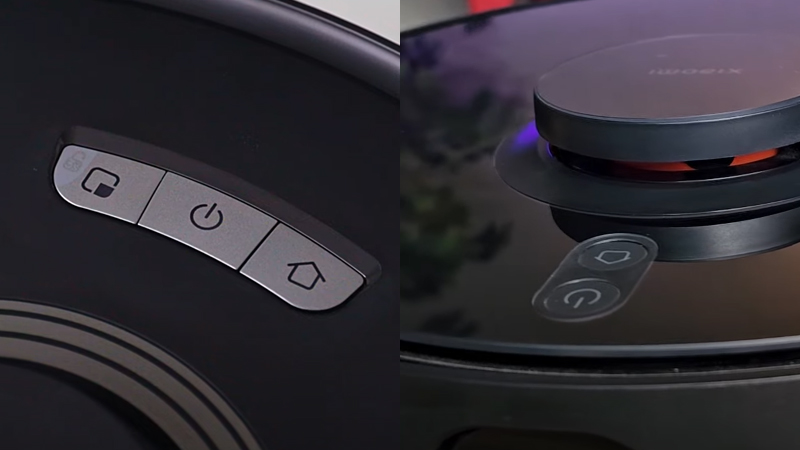
App Connectivity
To unlock a treasure trove of features for these smart bots and manage everything remotely, you must pair them via the accompanying app. The Q7 Max works with the Roborock app, while the S10T is available with the Mi Home app. Both can be downloaded for free from the App Store or the Play Store, depending on your phone and will quickly detect your robot for connection.
When all is set, you get some settings for map management, from delimiting and renaming rooms to setting no-go zones, no-mop zones, and invisible walls. These settings can be configured independently for multiple floors without any cross-influence, ensuring a customized cleaning experience for each level of your home.
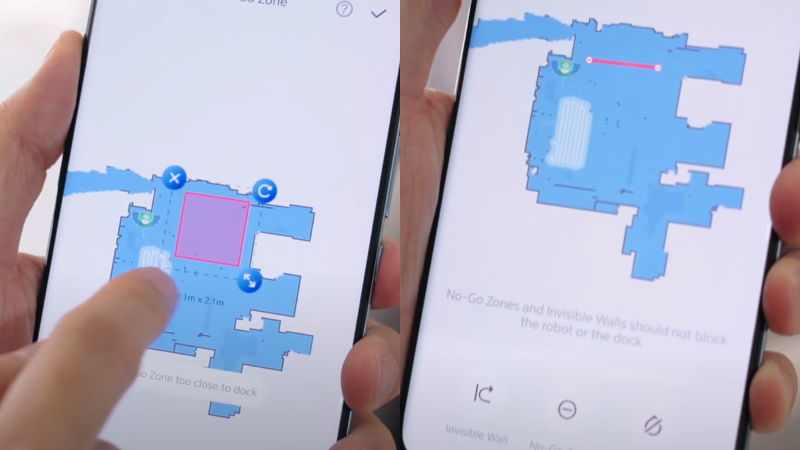
There is also a wealth of other nifty settings: you can choose the cleaning type, the vacuuming power, the cleaning pattern, the water usage for the mopping pad, and so forth and so on. Additionally, if you have Alexa or Google Assistant, you can control your robot vacuum without the app, using voice commands such as “start/pause/stop cleaning,” “return to charging dock,” or “clean the bedroom.”
Through these user-friendly apps, you can effortlessly monitor the recent cleaning session, along with the duration and current battery status. There is also the possibility of scheduling cleaning and keeping tabs on the condition of essential parts such as the filter, main brush, side brush, and mopping pad.
One advantage that the Roborock app has over the MI app is the ability to display 3D maps. These special maps not only show no-go zones and invisible walls but also let you add furniture, providing an immersive and detailed view of your space.
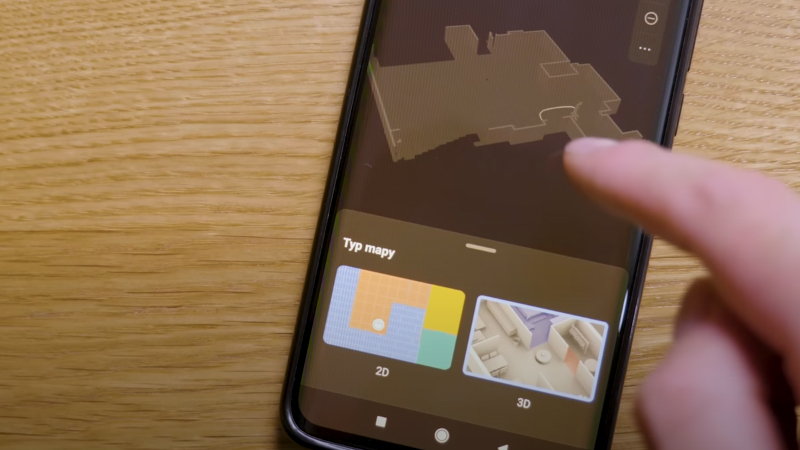
Cleaning & Maintenance
Winner: Tie
To ensure efficient operation, a few key steps for upkeep are essential, including removing any dirt accumulated on the wheels and any debris or tangled hair from the brush rollers. I don’t want to make you sad, but no matter how smart these bots are, they still need a bit of babysitting since their dustbins are quite small and their home bases don’t have the auto-emptying feature. Plus, don’t forget about washing their mopping pads and giving their filters a good clean under the tap now and then to ensure peak performance.
Other Features
Winner: Roborock Q7 Max
Noise
| Roborock Q7 Max | Xiaomi S10T | |
|---|---|---|
| Working | ≈ 59-75 dB | ≈ 62-71 dB |
| Self-Emptying | None | None |
When operating at the highest setting, both tend to be on the noisier side, and they are quite quiet in their other settings. Although they only really need the maximum setting when cleaning carpeted areas, I highly recommend avoiding running them in the wee hours or any other time when quietude is preferred.
Mopping Ability
Both have a mopping function and come with a washable mop pad. Their mopping performances are generally on par, and both put the mop plates on the floor and just drag them without vibrating or agitating elements. That way, both machines are adept at handling light stains and fine dust, but they struggle with tenacious stains such as dried-on BBQ sauce.
What’s more, these robots can’t automatically raise their mop plates when they detect carpeted areas, so setting no-mo zones on the app remains an essential step to truly protect your carpets.
Quick Rundown Of Roborock Q7 Max
- Deeper Cleaning with Powerful 4200 Pa Suction: With an incredible maximum suction power of 4200 Pa, the Q7 Max easily lifts debris and pet hair from floors, drags it from cracks, and draws it from carpets. When a carpet is detected, it will automatically increase its suction to the maximum for deep cleaning.
- Vacuum and Mop Simultaneously: To get rid of fine dust that vacuuming alone might miss, the Q7 Max can vacuum and mop simultaneously. Equipped with an electronic pump, the Q7 Max offers 30 water flow levels so you can fine-tune cleaning to match your floor types and preferences.
- Clean Smarter with PreciSense LiDAR Navigation: LiDAR navigation, which is incredibly accurate, can now be viewed in 3D, building precise maps of your home. It also monitors cleaning routes efficiently. You can virtually recreate your home by adding furnishings and flooring materials.
- Combined Dustbin & Water Tank: Combining the 470 ml dustbin and 350 ml water tank means that you can clean more often without worrying about emptying or refilling.
- Multi-directional Floating All-Rubber Brush: An all-rubber brush strongly resists hair tangles making it ideal for tackling long hair and pet hair. Multi-directional design means the brush can be closer to the floor to provide deeper and more efficient cleaning.
Quick Rundown Of Xiaomi S10T
No products found.
Product Videos
Related Articles to Roborock Q7 Max
- Roborock Q5+ Vs Q7 Max: Which Roborock Robot Should You Choose?
- An In-Depth Review Of The Roborock Q7 Max Vs Dreame L10 Pro: Which is Better?
- Roborock Q7 Max Vs S7: What Are the Differences Between Them?
- Roborock Q5 Vs Q7 Max: An In-Depth Analysis
- Roborock Q7 Max Vs Eufy X8: What Is The Best Option For Your Home?
- Viomi S9 Vs Roborock Q7 Max: Battle of the Feature-Rich Bots
- Viomi V5 Pro Vs Roborock Q7 Max: Which One Gets My Winning Ticket?
- Roborock Q7 Max Vs Dreame Z10 Pro: A Detailed Face-Off Comparison
- Roborock Q Revo Vs Q7 Max: Duel of the Roborock Dust-Suckers
- Dreame D10 Plus Vs Roborock Q7 Max: An In-Depth Comparison And Review
- Roborock Q7 Max Vs Q7: What Does The “Max” Label Refer To?
- Dreame D9 Max Vs Roborock Q7 Max: Which Chinese Brand Does the Job Better?
- Roborock Q7 Max Vs Q7 Max Plus: Is the Self-Cleaning Base A Game Changer?
- Roborock Q7 Max Vs S7 MaxV: Which Roborock Is Better?
- Roborock Q7 Max Vs iRobot J7: A Head-To-Head Comparison
References:
- Roborock Q7 Max: https://us.roborock.com/products/roborock-q7-max
- Xiaomi S10T: https://www.mi.com/global/product/xiaomi-robot-vacuum-s10t/

Richard B. Schmidt is a prominent figure in the vacuum cleaner industry, boasting over 15 years of expertise. Armed with a Robotics Engineering degree from Northeastern University and a Master’s in Consumer Science from Harvard, his unique blend of technical knowledge and consumer insights positions him as a sought-after authority in vacuum cleaner evaluation. Richard’s career began at Dyson, where he contributed to the development of innovative vacuum models. Transitioning to advocacy and reviews, he co-founded the first Vacuum-focused blog in 2008, offering comprehensive analysis and user guides for various vacuum cleaners. In 2020, he founded RoboMop.net, providing ongoing insights through columns and buyer’s guides.
